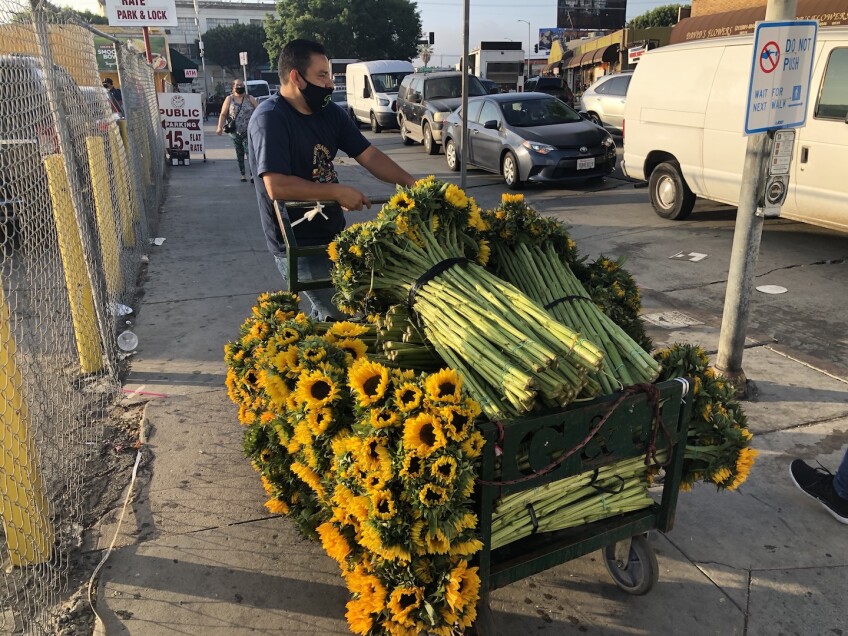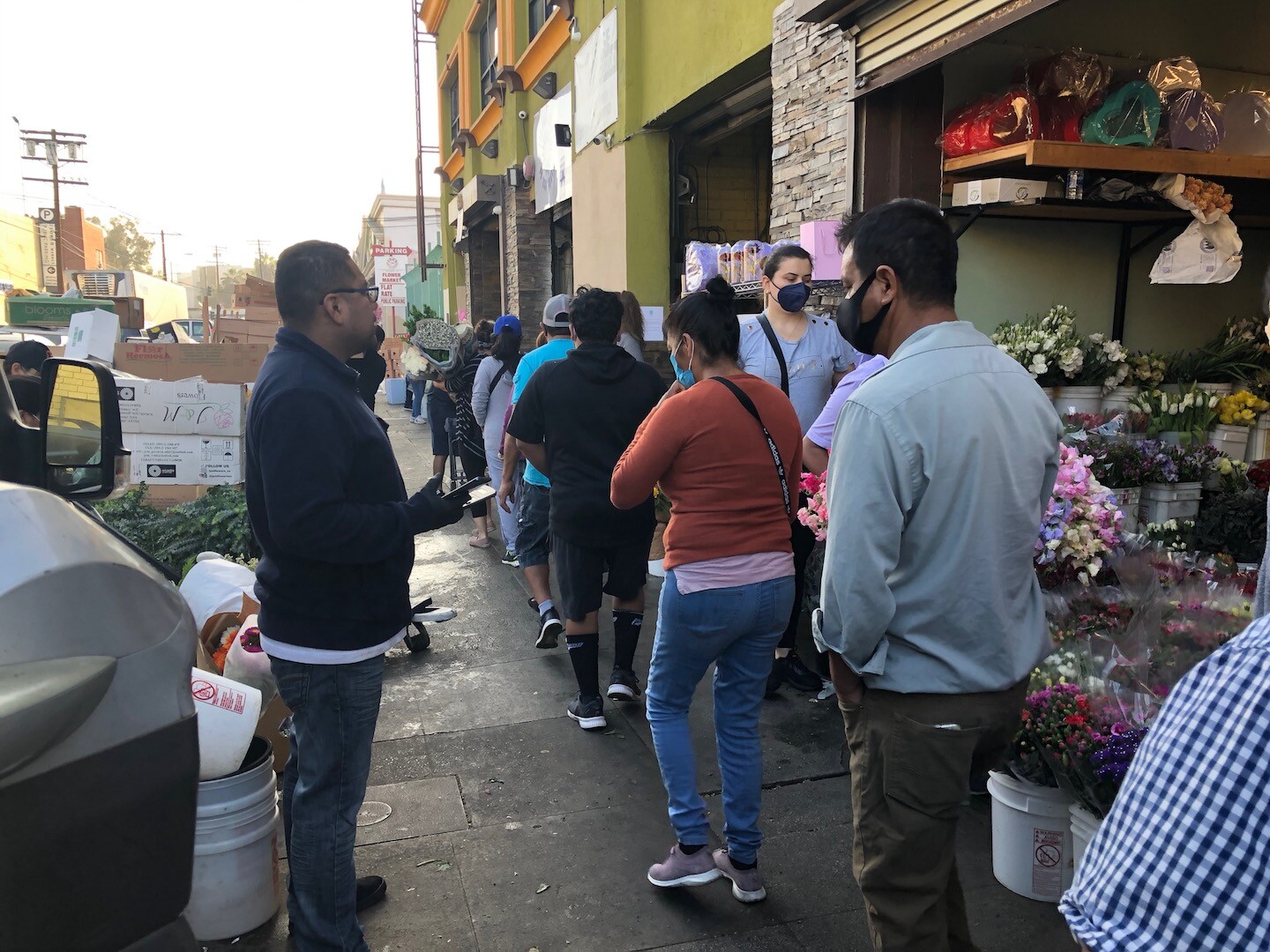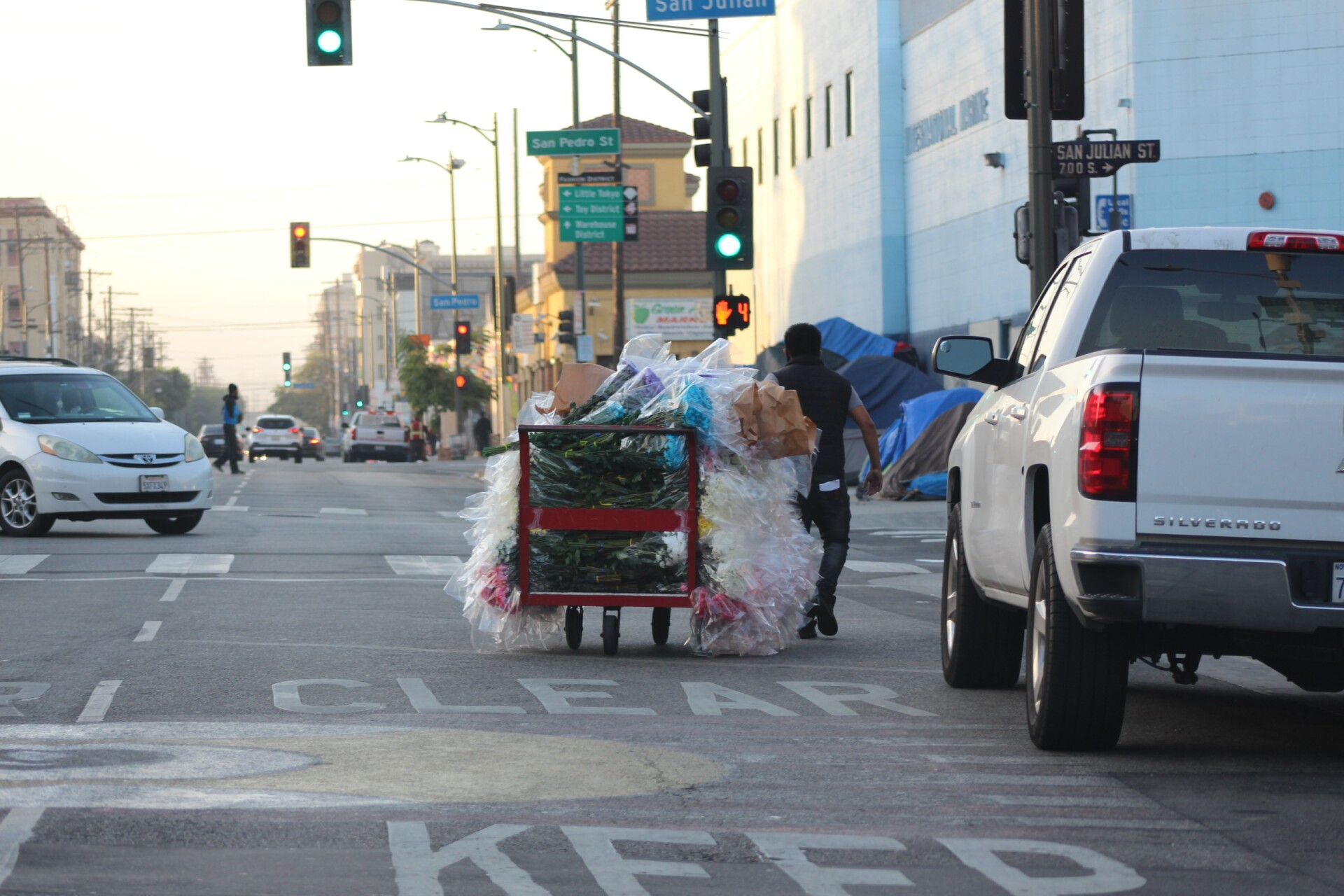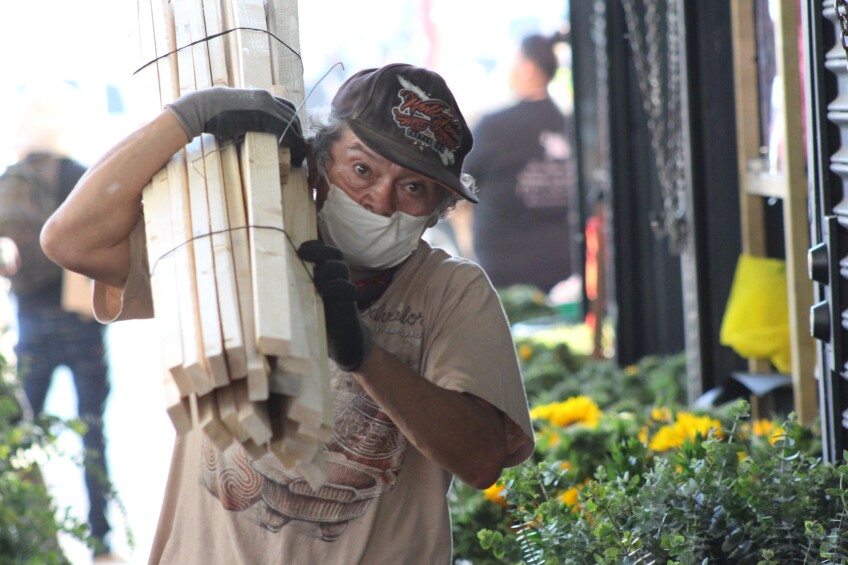Some Businesses Open as 'Daunting' Unemployment Numbers are Released
The slow return from COVID-19 stay-at-home orders began Friday when some so-called "non-essential" businesses that sell toys, music, books and flowers were allowed to partially reopen to customers -- just in time for Mother’s Day.
Suddenly, small business owners forced to shut down for two months opened with the hope that face-covered customers would return, even if they could only do so by stopping at the curb for pickup.
“We’ve seen a steady stream,” said Jim Iacono, whose Vavera gift shop in Playa del Rey put its merchandise out on the sidewalk for customers to pull up and buy.
Iacono, profiled twice on SoCal Connected since the COVID-19 shutdown, has not had a response for his federal Paycheck Protection Loan application, hasn’t received his $1,200 stimulus check, and used retirement savings to pay his rent. The chance to open Friday lifted his spirits.
Business started slow Friday, but customers purchased candles and homemade face masks by mid-afternoon.
“It hasn’t been gang busters. It’s something,” Iacono said. “I expect over the weekend it will be more. I think people got used to sleeping in.”
The easing of Gov. Gavin Newsom's stay-at-home order to allow some businesses – including golf courses, car dealers, and clothing and sporting goods stores – to open began as the federal Bureau of Labor Statistics released shocking but expected nationwide unemployment figures that hadn't been seen since the Great Depression of the 1930s.
The bureau reported that 20.5 million people nationwide lost their jobs in April, raising the unemployment rate 10.3 percentage points to 14.7%. The bureau called that the largest over-the-month increase since records were kept in 1948.
Unemployment rates rose sharply among all worker groups, including men, women and different races. Teenagers and black and Latino people were hit hardest.
"I wasn't actually surprised, though I was clearly disheartened by the numbers," said Bill Allen, chief executive officer of the Los Angeles County Economic Development Corporation.
Allen said another daunting number for newly unemployed is expected to come out following May as many people continue to lose their jobs. In Southern California, where more than 1 million people in Los Angeles County have already filed for unemployment benefits, the unemployment rate could hit 20-25 percent or even higher across a 10-county region.
“Twenty percent is shocking enough and will create lasting damage to business, to individuals, and to communities,” Allen said. “It will take us quite some time to recover.”
Women – many working in service jobs, such as restaurants, retail businesses, hotels, nail salons and more – were hit harder than men. Small businesses, those with less than 50 employees, and less capital than large companies to withstand a sudden loss of income, also were seriously hurt and forced to let employees go, Allen said.
Government employees also found themselves facing uncertain futures as sales and hotel taxes, tourism dollars and other sources of revenue dried up. Santa Monica became one of the first cities in Southern California this week to approve plans to lay off nearly 250 employees to deal with a $48 million budget deficit this year and an expected $224 million deficit by 2022.
During a nearly 8-hour meeting Tuesday, city department heads from the library system, public works, fire and police, human resources and other offices, reported the hundreds of thousands to millions of dollars they were hoping to save. Cuts will include closing some library branches and eliminating some 60 percent of the system’s workers and librarians.
Jeff Kaplan, a 42-year-old research librarian for 12 years, said he never imagined just a few weeks ago that he would suddenly be out of a job. Among those who taught classes about unemployment benefits and how to search for a job during the 2009 recession, Kaplan was given notice that he is among those being laid off.










“I’m sad. The library was key to helping the community recover from the last recession,” Kaplan said. “I used to teach the classes, so at least I know what to do.”
As some were filing for unemployment benefits, others in Los Angeles County were opening their businesses, hoping to make some much needed money before Mother’s Day.
Preparations for Friday began in earnest on Thursday afternoon for Felicia St. Denis. Just six weeks ago, she unplugged her refrigerator on a rainy day, facing uncertainty about what would happen to “Flowers by Felicia,” her business in Playa del Rey for 31 years. She said she tried to be optimistic.
This week with a chance for curbside delivery, St. Denis was preparing orders.
"It's really busy," she said Thursday afternoon. "It's great news because it seems like some people can't take their moms out for Mother's Day. They're getting flowers."
St. Denis said she appreciated the business because what is ahead is unknown.
“There’s no graduation, there's no proms, there's no corsages, so there’s a lot of florists who may be open for Mother’s Day, but who knows what the summer brings because those are usually the driest, hottest, quietest months,” she said.
Even as some businesses reopened, the unemployment figures revealed Los Angeles’ so-called “Barbell economy,” a term coined to describe a society with very rich and very poor residents with a decreasing middle class in between.
Some Southern California residents, for example, were signing up to play golf this weekend. Higher educated professionals cooped up at home for weeks were ready to get out, while others, Allen said, were “just worried about whether they could put food on the table.”
“That’s the inequity that exists in our society today,” Allen said.






